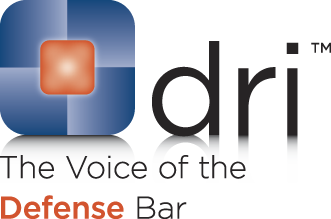 Mr. Bartlett had a dispute with his insurance company. He disagreed with the insurance company’s valuation of his underinsured motorist case. Bartlett sued the tortfeasor and got a judgment against him that was in excess of the torfeasor’s liability limits and in excess of Bartlett’s own underinsured (UIM) motorist coverage
Mr. Bartlett had a dispute with his insurance company. He disagreed with the insurance company’s valuation of his underinsured motorist case. Bartlett sued the tortfeasor and got a judgment against him that was in excess of the torfeasor’s liability limits and in excess of Bartlett’s own underinsured (UIM) motorist coverage
With the judgment in hand, Bartlett filed a suit against his UIM carrier for bad faith. Bartlett v. State Farm Mut. Auto. Ins., Case No. IP01-0510-C-HG, (D.C. Ind., Nov. 27, 2002). Bartlett argued that his UIM carrier committed bad faith by not paying him his full UIM policy limit from the outset. At trial, Bartlett argued that the insurance company should pay him not just the limits of his underinsured motorist coverage but should also be obliged to pay the total of the judgment even though it would be in excess of his own UIM limits. Bartlett argued that the court should treat his case like it would a third-party bad faith failure to settle case. In those cases, courts will usually award damages in the amount of the judgment rendered against the tortfeasor.
However, the court rejected the policyholder’s argument. It said that even if there was bad faith, the proper amount of damages did not include the bodily injury damages that were in excess of the liability limit of the tortfeasor and further in excess of the policyholder’s UIM limit. The court said that UIM disputes over value would never expose the policyholder to an excess judgment as would be the case in a third-party failure to settle situation. When it came to bodily injury damages, the court had to honor the UIM limits. The court pointed to the contractual provisions in the insurance policy that gave the policyholder dispute resolution options such as negotiations, arbitration or trial.
The court explained why a first-party case was different than a third-party case. In a third-party failure to settle situation, if the insurance company wrongfully offered too little to resolve the case, it would be hiding behind the financial status of its policyholder. However, in a first-party case, even if the judgment were above the total of both the liability policy and the UIM policy, the policyholder would never be left with an obligation to pay a judgment in excess of his own policy coverage. The court explained that the policy considerations behind this rule in a third-party case were not implicated in a first-party situation.
The court also rejected the policyholder’s argument that the amount of the verdict, which was in excess of both the tortfeasor’s liability limits and his own underinsured motorist limits was prima facie evidence of bad faith. The court said that there was no per se rule that a dispute about value automatically constituted bad faith. Thus, even if it were ultimately determined that the insurer breached its duties under the UIM contract, as long as it was done in good faith and it had a “rational, principled basis for doing so,” there is no claim for bad faith denial. See Erie Ins. Co. v. Hickman, 622 N.E.2d 515, 520 (Ind. 1993)
If you have questions about damages in a bad faith case, call Mike Mills or send an an email to mike@mcmillslaw.com.
 Follow
Follow Email
Email


